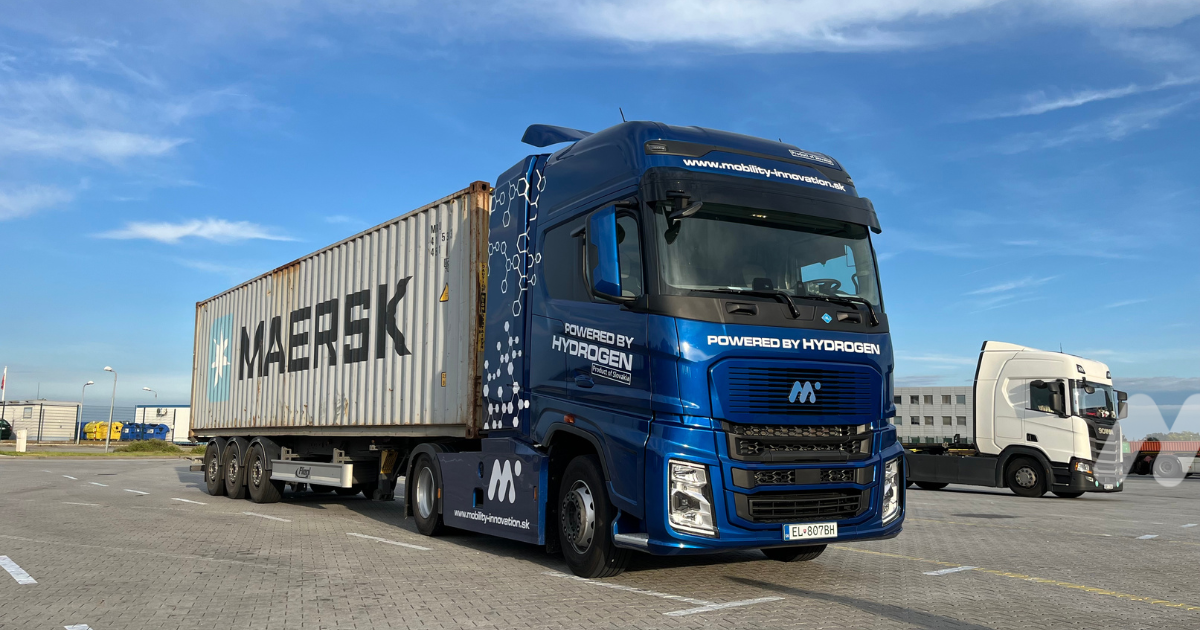Hydrogen truck MIP in practice: 5 findings that are changing fleet planning

Tests that decide the future of fleets
Testing in real-world logistics has shown that the MIP hydrogen truck can handle full tours, fast fill-ups, and provide data that helps fleet managers better plan their fleets. It’s no longer just technical parameters on paper, but concrete experiences from trips with partners. Here are five findings that show what hydrogen propulsion means for carriers today.
Range in practice – a reliable basis for planning
Real-world tests have confirmed the claimed range of 600 to 750 kilometres. In practice, the difference to the paper figures proved to be negligible. Therefore, dispatching can plan tours similarly to the diesel, but with the advantage of emission-free operation.
The key lesson: allow a reasonable margin, but the reality remains very close to the stated parameters.
Filling in 10 minutes – the time that keeps the fleet moving
Filling the hydrogen truck took about the same amount of time as refueling the traditional fuel. This made it possible to fit it into the trip schedule without disrupting the turnarounds.
For the fleet manager, this means that the speed of fulfilment keeps vehicles in service and minimises the risk of delays.
The lesson is clear: Fulfillment needs to be planned as a natural part of the daily schedule.
Reliability under full load
The new combination of Dana Sumo engine and Eaton gearbox stood up to the full weight of 45 tonnes. The tests were carried out in real-life conditions – on the highway, on gradients and under heavy loads. The vehicle demonstrated stability and reliability from the very first runs.
The lesson for hauliers: technology is ready to handle standard operational demands without compromise.
The voice of drivers and dispatchers
“It was key for dispatch that the fill time fit within the driver’s break time,” was heard during the test run. Drivers appreciated the ride comfort, quieter operation and ease of use.
These responses show that people’s acceptance of technology in practice is as important as the technical parameters.
The lesson: without the support of drivers and dispatchers, the new technology will not take off.
Data that speeds up decision-making
During the tests we monitored hydrogen consumption, battery usage, filling times and driver reactions. All this data is the basis for future fleet planning and investment decisions.
For hauliers, this means that they get a hard grounding already in the first pilot projects, saving time and money in future projects.
The lesson: practice data is an invaluable resource for strategic decisions.
What it means for carriers today
The hydrogen tractor is no longer a laboratory prototype, but a real solution ready for everyday operation. Tests have shown that the vehicle can stand up to international logistics.
In addition, pilot projects reveal details that would never show up on paper.
The lesson is simple: whoever starts earlier has the advantage of a faster learning curve and a competitive edge.
Conclusion and CTA
Initial tests have shown that the MIP hydrogen tractor is ready for real-world operation and is delivering data that is changing the way fleets are planned.
👉 Want to know what a pilot project would look like in your company? Arrange a consultation with us. Together, we’ll develop a tailor-made integration plan – so that hydrogen propulsion works in your fleet from the first mile.
Frequently Asked Questions
- How long does it take to fill a hydrogen tractor?
- Filling up a hydrogen tractor takes about 10 minutes, which is comparable to refuelling a traditional fuel tank. In practice, this means that the vehicle can continue its tour without delay.
- What is the realistic range of a hydrogen tractor?
- Tests have confirmed a range of 600 to 750 kilometres per fill-up. In real operation, the figures were very close to the paper parameters.
- What does the hydrogen vehicle pilot project mean?
- The pilot project allows the carrier to test the technology in its own conditions. It provides real data on consumption, range and filling, which is the basis for decision-making on further investments.
- How does hydrogen fleet planning work?
- Fleet planning involves matching vehicles, available filling stations and journey times. The result is a reliable, emission-free operation that can be managed similarly to traditional powertrains.
- What role does MIP play in drive integration?
- MIP acts as a system integrator. This means it will customize the drive to fit your schedule, station options, and operation needs.
Recommended reading
If you are more interested in the topic of hydrogen tractors and emission-free logistics, we also recommend the following articles:
- Hydrogen tractor: what to ask the supplier – a handy list of questions every haulier should have ready before investing.
- Hydrogen myths in transport – facts vs. common misconceptions about hydrogen technology.
- Hydrogen tractor in testing with METRANS – experience and data directly from the logistics operation.